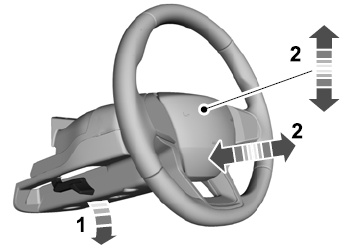Lincoln Aviator 2020-2025 Service Manual / Electrical / Information and Entertainment Systems / Information and Entertainment System - General Information / Removal and Installation - Rear Audio Control Module (RACM)
Lincoln Aviator: Information and Entertainment System - General Information / Removal and Installation - Rear Audio Control Module (RACM)
Removal
NOTE: Removal steps in this procedure may contain installation details.
NOTE: Touchscreen controls shown, analog controls are similar.
-
NOTE: If installing a new module, it is necessary to upload the module configuration information to the scan tool prior to removing the module. This information must be downloaded into the new module after installation.
Using a diagnostic scan tool, begin the PMI process for the RACM following the on-screen instructions.
-
mostbet apk
NOTE: On both sides.
Release the clips and position the floor console top side trim panels.
.jpg) |
-
Release the clips, disconnect the electrical connector and remove the rear console trim plate.
.jpg) |
-
Remove the screws and the RACM.
.jpg) |
Installation
-
To install, reverse the removal procedure.
-
NOTE: This step is only necessary when installing a new component.
Using a diagnostic scan tool, complete the PMI process for the RACM following the on-screen instructions.
 Removal and Installation - Overhead Speaker
Removal and Installation - Overhead Speaker
Removal
NOTE:
Removal steps in this procedure may contain installation details.
NOTE:
LH front speaker is shown, all others are similar.
Lower the headliner...
 Removal and Installation - Rear Door Speaker
Removal and Installation - Rear Door Speaker
Removal
NOTE:
Removal steps in this procedure may contain installation details.
All vehicles
Remove the rear door trim panel.
Refer to: Rear Door Trim Panel (501-05 Interior Trim and Ornamentation, Removal and Installation)...
Other information:
Lincoln Aviator 2020-2025 Owners Manual: Additional Information Contained on the Tire Sidewall for LT Type Tires
Note: Tire Quality Grades do not apply to this type of tire. LT type tires have some additional information beyond those of P type tires; these differences are described below. LT: Indicates a tire, designated by the Tire and Rim Association, that is intended for service on light trucks...
Lincoln Aviator 2020-2025 Owners Manual: Understanding Your Transmission Selector Positions
Your vehicle has an electronic transmission shifter. The transmission selector is on the center stack below the touchscreen. P Park. R Reverse. N Neutral. D Drive. The instrument cluster displays the current gear. Park (P) With the transmission in park (P), your vehicle locks the transmission and prevents the wheels from turning...
Categories
- Manuals Home
- Lincoln Aviator Owners Manual
- Lincoln Aviator Service Manual
- Configuring The Head Up Display
- Disabling Auto-Start-Stop
- Garage Door Opener
- New on site
- Most important about car
Adjusting the Steering Wheel - Vehicles With: Manual Adjustable Steering Column
WARNING: Do not adjust the steering wheel when your vehicle is moving.
Note: Make sure that you are sitting in the correct position.
Unlock the steering column. Adjust the steering wheel to the desired position.
Copyright © 2025 www.liaviator2.com
